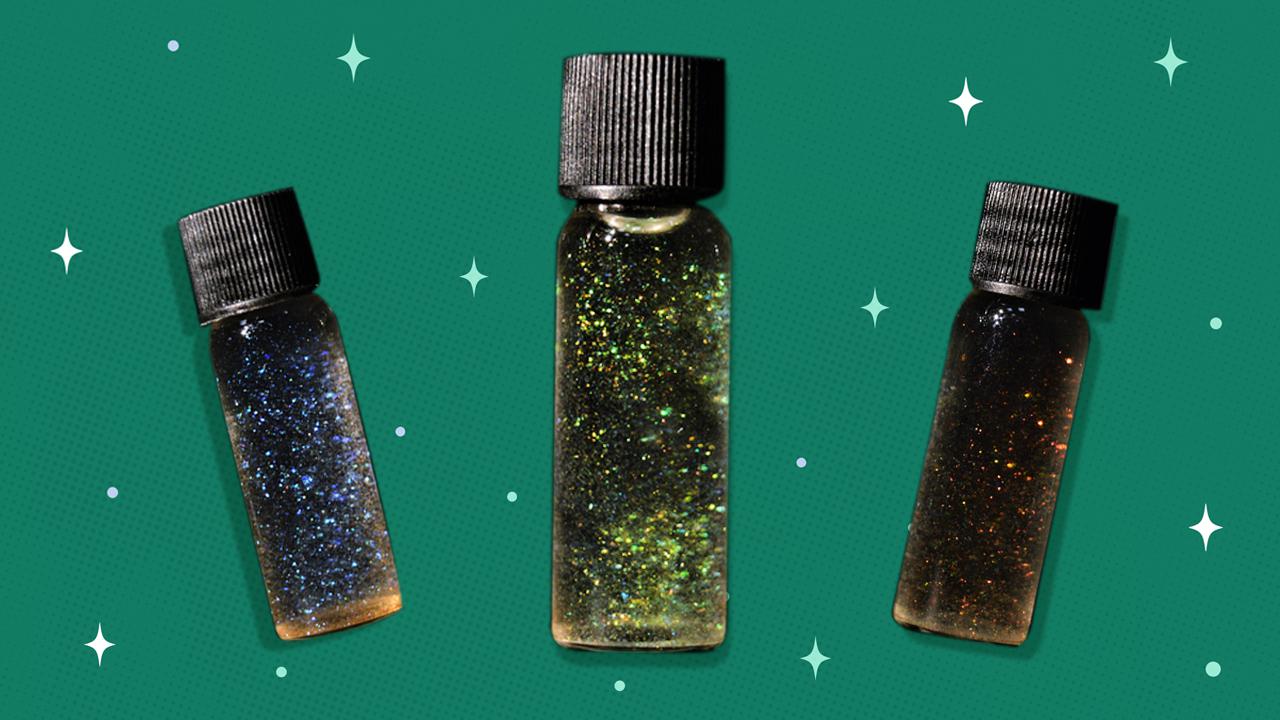A New Biodegradable Glitter Is Here Thanks to Cambridge Researchers
<p>It is made entirely from plants.</p>

The photograph shows three vials containing an ensemble of photonic CNC particles dispersed in three different solvents: water, water: ethanol and ethanol. Pictured vials: Benjamin Droguet / University of Cambridge
 Why you can trust us
Why you can trust us
Founded in 2005 as an Ohio-based environmental newspaper, EcoWatch is a digital platform dedicated to publishing quality, science-based content on environmental issues, causes, and solutions.
The holiday season is approaching, which means that stores are starting to fill with cards and decorations coated in glitter.
Scientists and environmental advocates have pointed out that glitter is actually made of microplastics, and is therefore a dangerous contribution to the ocean plastic crisis. But now researchers may have developed a path towards a sparkly holiday season without the pollution risk: a biodegradable glitter made from cellulose.
“It will be just as annoying—but it won’t harm the planet and is safe for your little ones,” study senior author Professor Silvia Vignolini from Cambridge’s Yusuf Hamied Department of Chemistry said in a press release.
The new glitter alternative was written up in Nature Materials on Wednesday. It is made from cellulose nanocrystals, which can create brilliant colors through a process called structural color.
“The cellulose nanocrystals are organized in such a way that they can make color,” paper first author Benjamin Droguet, also of Cambridge’s Chemistry Department, told Fast Company.
Essentially, the way it works is that the nanocrystals form a helicoidal, or spiral, structure that bends light to create brilliant colors. In nature, this effect can be seen in butterfly wings or peacock feathers, the press release explained.
While cellulose itself is naturally clear, it can be made to create these brilliant hues through a process called self-assembly, in which the crystals align and twist, according to Fast Company.
“Think about a soap bubble,” Vignolini told Fast Company. “Water is transparent, but as soon as you create that soap bubble layer, then you start to see colors.”
While self-assembly in cellulose nanocrystals has been studied at a small scale, this is the first time researchers have figured out how it could be used on an industrial scale, the paper authors explained.
To source their cellulose, the team used wood pulp, but any form of cellulose could be used, including cotton, banana peels or coffee bean skins, Vignolini told Fast Company. The team turned their wood-pulp cellulose into a film by placing it in water. When the water evaporated, it forced the crystals to contract and spiral to produce colors. The team then ground the film into little sparkly bits.
The process is much less energy intensive than traditional means of creating artificial colors.
“Traditionally, effect pigment minerals have to be heated at temperatures as high as 800°C to form pigment particles. When you consider the quantity of mineral effect pigments that is produced worldwide, you realize that their use is harmful to the planet,” Droguet said in the press release.
In addition to replacing microplastic glitter, the team also thought their alternative could be used in the place of “natural glitters” like mica and titanium dioxide, Fast Company explained. Mica is often mined using child labor and titanium dioxide is potentially carcinogenic.
The team thought their alternative could be especially useful in makeup, which uses around 5,000 tonnes (approximately 5,512 tons) of microplastics a year in Europe.
“We believe this product could revolutionize the cosmetics industry by providing a fully sustainable, biodegradable and vegan pigment and glitter,” Vignolini said in the press release.
Subscribe to get exclusive updates in our daily newsletter!
By signing up, you agree to the Terms of Use and Privacy Policy & to receive electronic communications from EcoWatch Media Group, which may include marketing promotions, advertisements and sponsored content.

 233k
233k  41k
41k  Subscribe
Subscribe 



